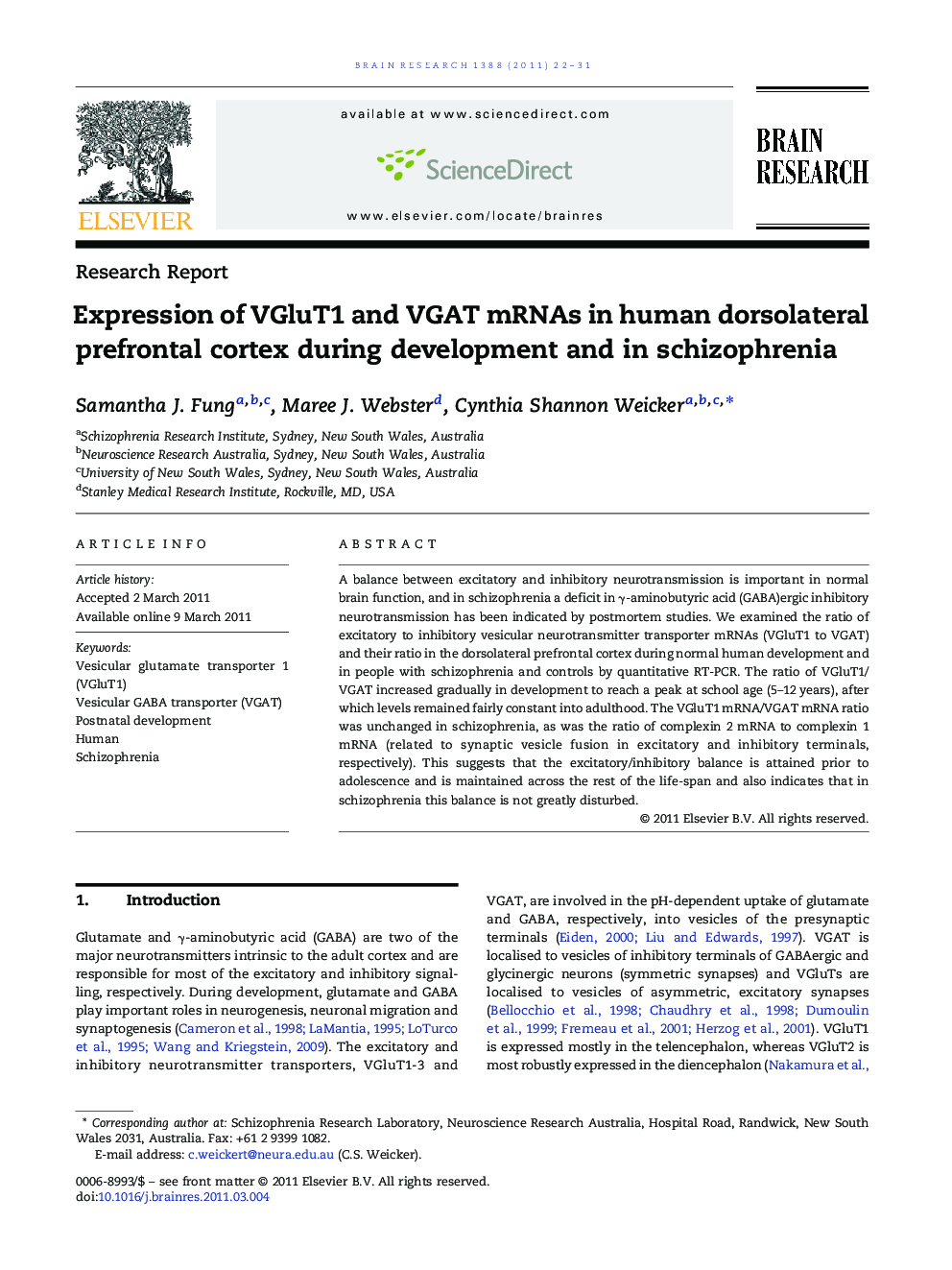| Article ID | Journal | Published Year | Pages | File Type |
|---|---|---|---|---|
| 6264854 | Brain Research | 2011 | 10 Pages |
A balance between excitatory and inhibitory neurotransmission is important in normal brain function, and in schizophrenia a deficit in γ-aminobutyric acid (GABA)ergic inhibitory neurotransmission has been indicated by postmortem studies. We examined the ratio of excitatory to inhibitory vesicular neurotransmitter transporter mRNAs (VGluT1 to VGAT) and their ratio in the dorsolateral prefrontal cortex during normal human development and in people with schizophrenia and controls by quantitative RT-PCR. The ratio of VGluT1/VGAT increased gradually in development to reach a peak at school age (5-12 years), after which levels remained fairly constant into adulthood. The VGluT1 mRNA/VGAT mRNA ratio was unchanged in schizophrenia, as was the ratio of complexin 2 mRNA to complexin 1 mRNA (related to synaptic vesicle fusion in excitatory and inhibitory terminals, respectively). This suggests that the excitatory/inhibitory balance is attained prior to adolescence and is maintained across the rest of the life-span and also indicates that in schizophrenia this balance is not greatly disturbed.
Research highlights⺠VGluT1 and VGAT are involved in loading excitatory and inhibitory synaptic vesicles. ⺠Loading of neurotransmitter vesicles regulates quantal neurotransmitter release. ⺠The ratio of VGluT1 to VGAT increases gradually to teenage years in human DLPFC. ⺠Development of neurotransmitter signaling is protracted in the human brain. âºThe ratio of VGluT1 to VGAT was not aberrant in schizophrenia.
